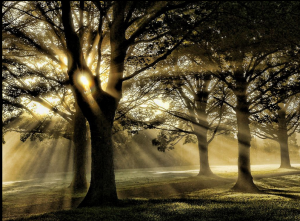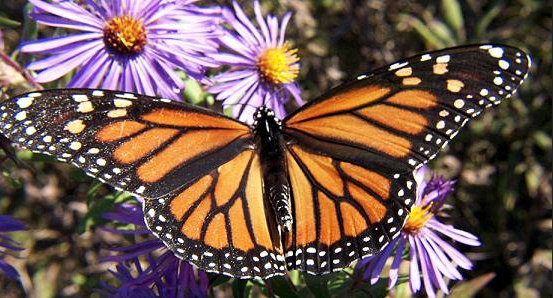 Wisconsin’s biggest brat ever! “Brat Fest officials said they grilled a brat measuring 54 feet 10 inches to surpass the record brat of 52 feet, 2 inches set last October in Prescott. The monster brat made by Johnsonville Sausage consisted of 28 pounds of pork, and fit perfectly on a bun made by Pan-O-Gold using 45 pounds of dough. The brat was grilled on a handmade cinder block grill. It took about 20 volunteer grillers to rotate the brat, which took roughly 30 minutes to cook. Pan-O-Gold also produced the bun used in last year’s event in Prescott. “This bun was the largest we’ve ever made, using 26 pounds of flour,” said Dan Futato, vice president and general manager for Pan-O-Gold.”
Wisconsin’s biggest brat ever! “Brat Fest officials said they grilled a brat measuring 54 feet 10 inches to surpass the record brat of 52 feet, 2 inches set last October in Prescott. The monster brat made by Johnsonville Sausage consisted of 28 pounds of pork, and fit perfectly on a bun made by Pan-O-Gold using 45 pounds of dough. The brat was grilled on a handmade cinder block grill. It took about 20 volunteer grillers to rotate the brat, which took roughly 30 minutes to cook. Pan-O-Gold also produced the bun used in last year’s event in Prescott. “This bun was the largest we’ve ever made, using 26 pounds of flour,” said Dan Futato, vice president and general manager for Pan-O-Gold.”
Sergio said one thing, and it came out wrong, Tiger poked his chest on that one, then a golf executive tried to smooth things over and he said something wrong, and he got thumped, so now Colin Montgomerie speaks up: “We’re all frightened to say anything; we’re frightened to open our mouths in case we say something that isn’t kosher in 2013. Somebody should tell us what to say because no one is quite sure what is right and wrong.”
What non-Americans think most unusual about Americans.
“He outdid Wiener on many fronts.”
Serious, but needs to be read, a link from Kris: “It’s really no surprise that I have come to believe that my body is a shameful thing, meant to be hidden, covered up, backed into corners. It’s no shocker that my conditioned response to men, young and old, openly ogling my body, is to internalize that shame, blame myself, and remain silent. It’s not a surprise to me, either, that thousands of women brought up in the paradox of strict evangelical modesty/purity culture and the hyper-sexualization of American culture have developed such an unhealthy relationship with their bodies. Whenever I hear of someone else admitting that they’ve struggled with an eating disorder or self-harm, I don’t think How awful! I think how normal. It’s not just girls with more curves. It’s my size-double-zero friends, too. We range all over the spectrum of the scale, and we all hate our bodies. We bear them each day, our particular brand of shame. We’re trapped inside flesh and bone, thinking the problem lies within our genetic makeup. I won’t wear sleeveless tops because I hate my arms. My best friend won’t wear shorts because she dislikes her legs. I have friends who haven’t left the house without makeup since they were twelve years old. Isn’t it sad? Isn’t it shocking? The main thing that taught me to hate and fear my body was the Church. I struggled with eating disorders and self-harm for most of my teenage years. Isn’t it sad? Isn’t it shocking? No. Today, in the church culture I grew up in, it’s not. It’s normal.”
Blurbing books and writing forewords can become more time-consuming than many realize … and I’ve had conversations with J.I. Packer and N.T. Wright about this, but I’ve not heard of anyone quite so official at it as Edmund Wilson.
Jay Michaelson worries aloud about creeping Jewish fundamentalism: “American Jews are actively supporting a demographic trend that threatens the fabric of American Jewish life: the unchecked growth of Jewish fundamentalism. Call them what you will — ultra-Orthodox Jews, “fervently Orthodox” Jews, Haredim, black hats. They will soon become the majority of affiliated Jews in the metropolitan New York area, and the religious majority in Israel. The results will be catastrophic.”
An interesting expose about Bill O’Reilly.
Gardening as community forming and helpful for mental health: “The garden, on the scraggly outskirts of town, is one of seven in Fresno created for immigrants, refugees and residents of impoverished neighborhoods with mental health money from the state. At the Slavic Community Garden, Ukrainian refugees persecuted for their religious beliefs in the Soviet Union now grow black currants for jam, dill for pickles and soups, and medicinal calendula flowers from Ukrainian seeds. The thinking of community leaders and health professionals is that gardens can help foster resiliency and a sense of purpose for refugees, especially older ones, who are often isolated by language and poverty and experiencing depression and post-traumatic stress. Immigrant families often struggle to meet insurance co-payments, and culturally attuned therapists are in short supply…. “This is my happiness,” Mrs. Yang said of the garden. “You feel the world in this place, and it brings you back home.”
Historical Titans with a tattoo… some surprises here.
Cool story about a young writer asking Hemingway’s advice on good books: “Hemingway wrote down a list of 16 books and handed it to Samuelson (many of the texts you can find in our collection of Free eBooks):
- The Blue Hotel by Stephen Crane
- The Open Boat by Stephen Crane
- Madame Bovary by Gustave Flaubert
- Dubliners by James Joyce
- The Red and the Black by Stendhal
- Of Human Bondage by Somerset Maugham
- Anna Karenina by Leo Tolstoy
- War and Peace by Leo Tolstoy
- Buddenbrooks by Thomas Mann
- Hail and Farewell by George Moore
- The Brothers Karamazov by Fyodor Dostoyevsky
- The Oxford Book of English Verse
- The Enormous Room by E.E. Cummings
- Wuthering Heights by Emily Bronte
- Far Away and Long Ago by W.H. Hudson
- The American by Henry James
Hemingway then reached over to his shelf and picked up a collection of short stories by Stephen Crane and gave it to Samuelson. He also handed him a copy of his own novel, A Farewell to Arms. “I wish you’d send it back when you get through with it,” Hemingway said of his own book. “It’s the only one I have of that edition.”
Speaking of writers, here’s a very good essay on essays: “When I say “essay,” I mean short nonfiction prose with a meditative subject at its center and a tendency away from certitude. Much of the writing encountered today that is labeled as “essay” or “essay-like” is anything but. These texts include the kind of writing expected on the SAT, in seminar papers, dissertations, professional criticism or other scholarly writing; politically engaged texts or other forms of peremptory writing that insist upon their theses and leave no room for uncertainty; or other short prose forms in which the author’s subjectivity is purposely erased or disguised. What these texts often have in common is, first, their self-conscious hiding of the “I” under a shroud of objectivity. One has to pretend that one’s opinions or findings have emanated from some office of higher truth where rigor and science are the managers on duty.”
Ben Witherington ponders the meaning of “home.”
 Butterflies with a memory: “Geology is what we look to when we want enduring monuments. Rock and metal outlast anything made of living tissue. Or do they? In another example of science getting poetic, it seems that a symbol of ephemera — a butterfly — provides evidence of a mountain long turned to dust. Monarch butterflies are some of the toughest insects in the world. Their migration takes them from southern Canada to central Mexico. The journey is so long and difficult that it outlasts the butterfly’s lifetime. Monarchs lay eggs at different stages through the journey. No one generation makes the whole trip. Along this journey are several sites that have become local treasures and tourist attractions. The monarchs, flying in swarms, group together to rest in small areas, covering the trees like bright orange leaves. But although these sites are the most showy part of the journey, they’re not the most amazing. The amazing part of the journey is the sudden eastward turn that monarchs take over Lake Superior. Monarchs fly over the lake, necessarily, in one unceasing flight. That alone would be difficult, but the monarchs make it tougher by not going directly south. They fly south, and at one point of the lake turn east, fly for a while, and then turn back toward the south. Why? Biologists, and certain geologists, believe that something was blocking the monarchs’ path. They believe that that part of Lake Superior might have once been one of the highest mountains ever to loom over North America. It would have been useless for the monarchs to try to scale it, and wasteful to start climbing it, so all successfully migrating monarchs veered east around it and then headed southward again. They’ve kept doing that, some say, even after the mountain is long gone.”
Butterflies with a memory: “Geology is what we look to when we want enduring monuments. Rock and metal outlast anything made of living tissue. Or do they? In another example of science getting poetic, it seems that a symbol of ephemera — a butterfly — provides evidence of a mountain long turned to dust. Monarch butterflies are some of the toughest insects in the world. Their migration takes them from southern Canada to central Mexico. The journey is so long and difficult that it outlasts the butterfly’s lifetime. Monarchs lay eggs at different stages through the journey. No one generation makes the whole trip. Along this journey are several sites that have become local treasures and tourist attractions. The monarchs, flying in swarms, group together to rest in small areas, covering the trees like bright orange leaves. But although these sites are the most showy part of the journey, they’re not the most amazing. The amazing part of the journey is the sudden eastward turn that monarchs take over Lake Superior. Monarchs fly over the lake, necessarily, in one unceasing flight. That alone would be difficult, but the monarchs make it tougher by not going directly south. They fly south, and at one point of the lake turn east, fly for a while, and then turn back toward the south. Why? Biologists, and certain geologists, believe that something was blocking the monarchs’ path. They believe that that part of Lake Superior might have once been one of the highest mountains ever to loom over North America. It would have been useless for the monarchs to try to scale it, and wasteful to start climbing it, so all successfully migrating monarchs veered east around it and then headed southward again. They’ve kept doing that, some say, even after the mountain is long gone.”
Master’s degrees on the rise: “The nation’s colleges and universities are churning out master’s degrees in sharply rising numbers, responding to a surge in demand for advanced credentials from young professionals who want to stand out in the workforce and earn more money. From 2000 to 2012, the annual production of master’s degrees jumped 63 percent, federal data show, growing 18 percentage points more than the output of bachelor’s degrees. It is a sign of a quiet but profound transformation underway at many prominent universities, which are pouring more energy into job training than ever before.”











